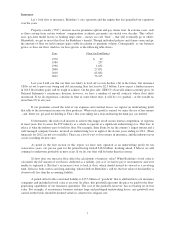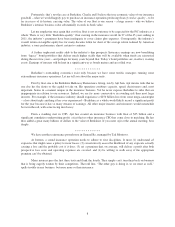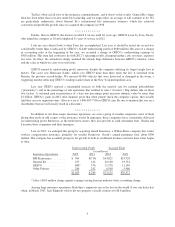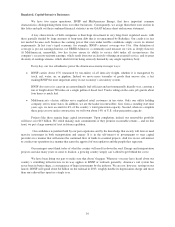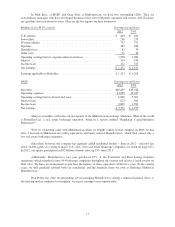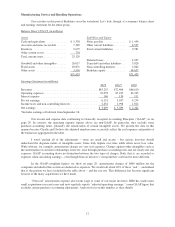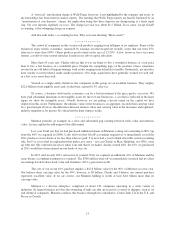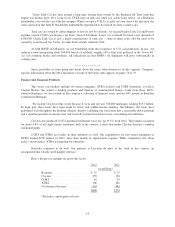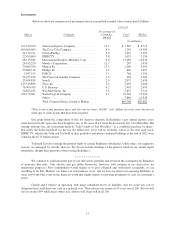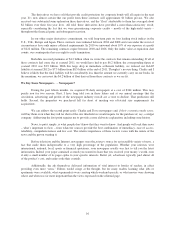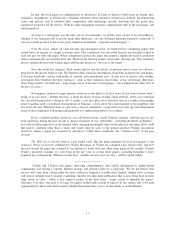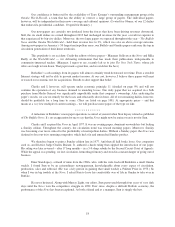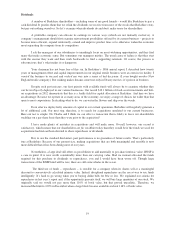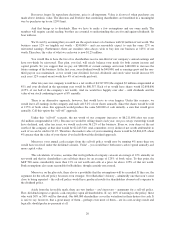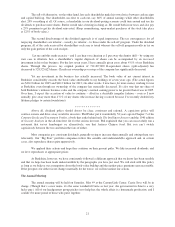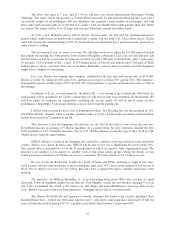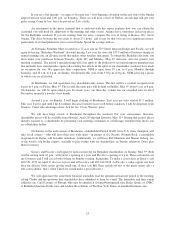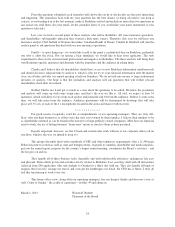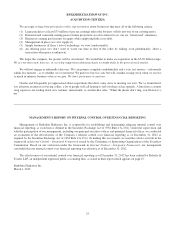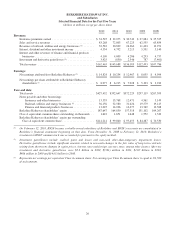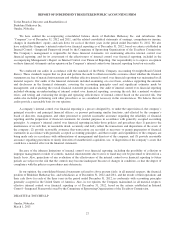Berkshire Hathaway 2012 Annual Report Download - page 19
Download and view the complete annual report
Please find page 19 of the 2012 Berkshire Hathaway annual report below. You can navigate through the pages in the report by either clicking on the pages listed below, or by using the keyword search tool below to find specific information within the annual report.In turn, the local paper was indispensable to advertisers. If Sears or Safeway built stores in Omaha, they
required a “megaphone” to tell the city’s residents why their stores should be visited today. Indeed, big department
stores and grocers vied to outshout their competition with multi-page spreads, knowing that the goods they
advertised would fly off the shelves. With no other megaphone remotely comparable to that of the newspaper, ads
sold themselves.
As long as a newspaper was the only one in its community, its profits were certain to be extraordinary;
whether it was managed well or poorly made little difference. (As one Southern publisher famously confessed, “I
owe my exalted position in life to two great American institutions – nepotism and monopoly.”)
Over the years, almost all cities became one-newspaper towns (or harbored two competing papers that
joined forces to operate as a single economic unit). This contraction was inevitable because most people wished to
read and pay for only one paper. When competition existed, the paper that gained a significant lead in circulation
almost automatically received the most ads. That left ads drawing readers and readers drawing ads. This symbiotic
process spelled doom for the weaker paper and became known as “survival of the fattest.”
Now the world has changed. Stock market quotes and the details of national sports events are old news
long before the presses begin to roll. The Internet offers extensive information about both available jobs and homes.
Television bombards viewers with political, national and international news. In one area of interest after another,
newspapers have therefore lost their “primacy.” And, as their audiences have fallen, so has advertising. (Revenues
from “help wanted” classified ads – long a huge source of income for newspapers – have plunged more than 90% in
the past 12 years.)
Newspapers continue to reign supreme, however, in the delivery of local news. If you want to know what’s
going on in your town – whether the news is about the mayor or taxes or high school football – there is no substitute
for a local newspaper that is doing its job. A reader’s eyes may glaze over after they take in a couple of paragraphs
about Canadian tariffs or political developments in Pakistan; a story about the reader himself or his neighbors will
be read to the end. Wherever there is a pervasive sense of community, a paper that serves the special informational
needs of that community will remain indispensable to a significant portion of its residents.
Even a valuable product, however, can self-destruct from a faulty business strategy. And that process has
been underway during the past decade at almost all papers of size. Publishers – including Berkshire in Buffalo –
have offered their paper free on the Internet while charging meaningful sums for the physical specimen. How could
this lead to anything other than a sharp and steady drop in sales of the printed product? Falling circulation,
moreover, makes a paper less essential to advertisers. Under these conditions, the “virtuous circle” of the past
reverses.
The Wall Street Journal went to a pay model early. But the main exemplar for local newspapers is the
Arkansas Democrat-Gazette, published by Walter Hussman, Jr. Walter also adopted a pay format early, and over
the past decade his paper has retained its circulation far better than any other large paper in the country. Despite
Walter’s powerful example, it’s only been in the last year or so that other papers, including Berkshire’s, have
explored pay arrangements. Whatever works best – and the answer is not yet clear – will be copied widely.
************
Charlie and I believe that papers delivering comprehensive and reliable information to tightly-bound
communities and having a sensible Internet strategy will remain viable for a long time. We do not believe that
success will come from cutting either the news content or frequency of publication. Indeed, skimpy news coverage
will almost certainly lead to skimpy readership. And the less-than-daily publication that is now being tried in some
large towns or cities – while it may improve profits in the short term – seems certain to diminish the papers’
relevance over time. Our goal is to keep our papers loaded with content of interest to our readers and to be paid
appropriately by those who find us useful, whether the product they view is in their hands or on the Internet.
17


